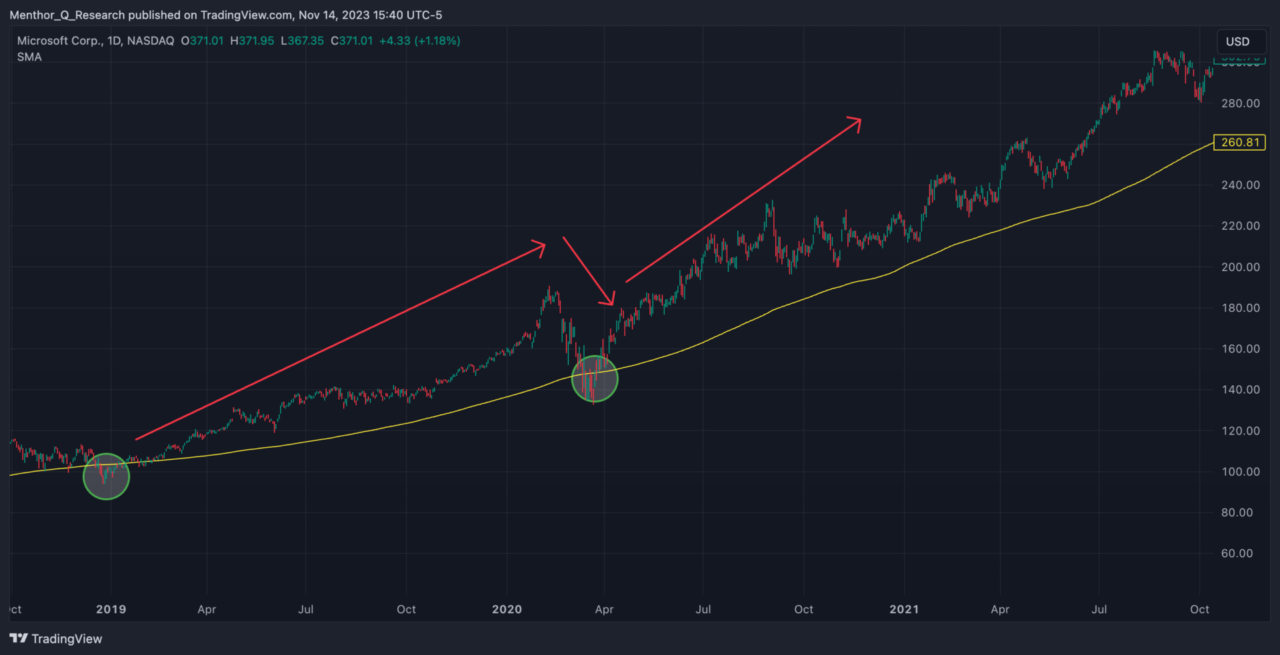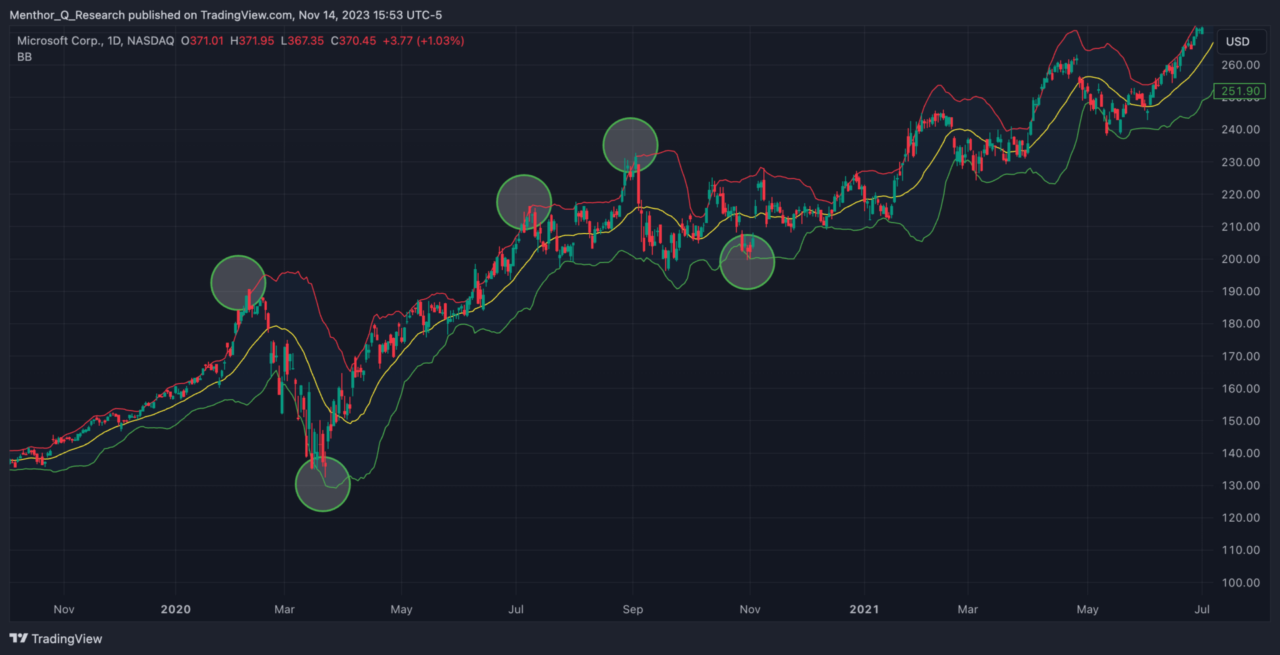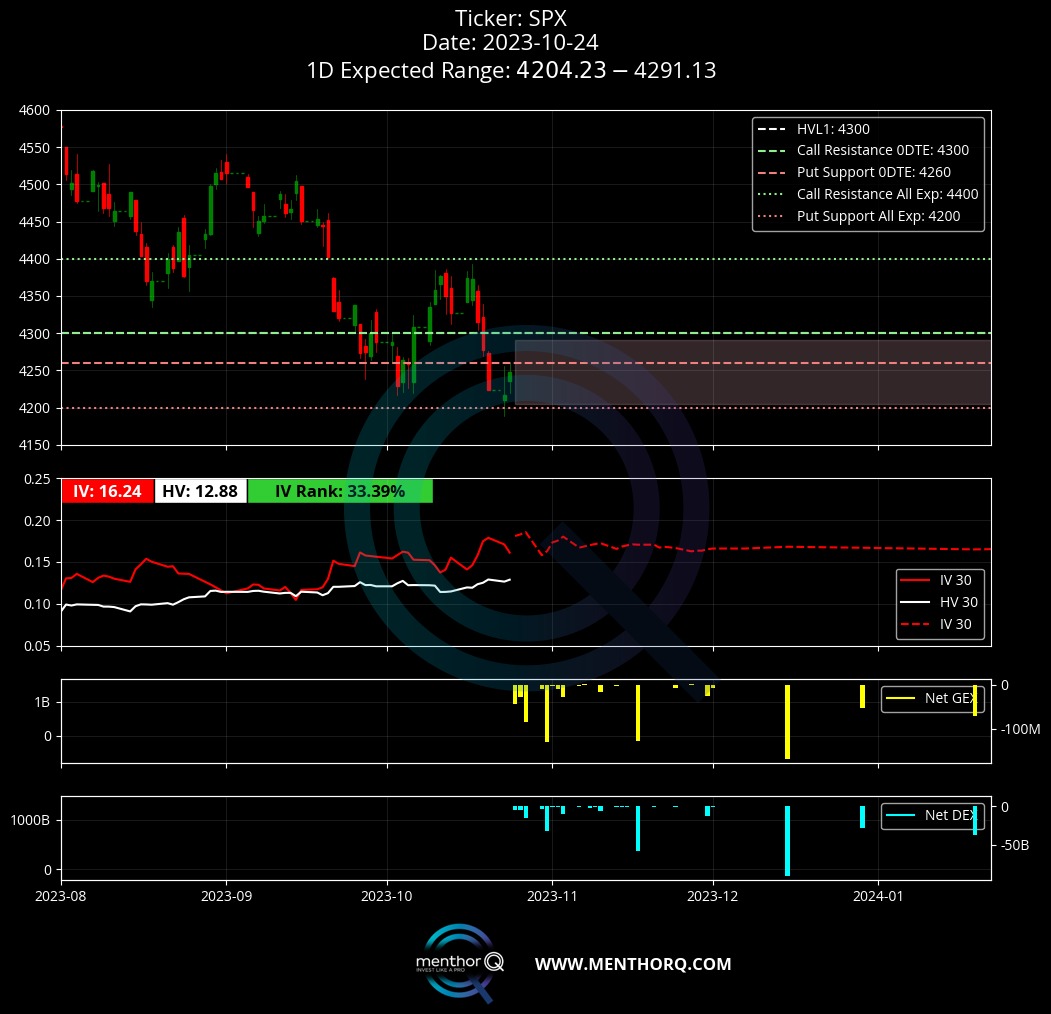Mean Reversion

A mean reversion strategy is a strategy that assumes that asset prices and historical returns will eventually revert to the long-term mean or average level of the entire dataset. This strategy is based on the assumption that markets are ranging rather than trending.
Here’s how a mean reversion strategy typically works:
- Identify the Mean. Calculate the average price of an asset over a certain period. This average is considered the mean or the “fair” value.
- Signal for Entry. If the current price deviates significantly from this average without any fundamental reason, it’s assumed that it will eventually revert back. A trader might enter a trade assuming that the price will move back towards the mean.
- Long Entry. If the price falls significantly below the mean, a trader may buy the asset, expecting the price to bounce back to the mean.
- Short Entry. If the price rises significantly above the mean, the trader may sell short, expecting the price to fall back towards the mean.
- Exit Strategy. The trader will exit the trade when the price moves back towards the mean, or according to predetermined risk management rules like stop-loss or take-profit levels.
Factors Affecting Mean Reversion Strategies
There are certain factors we should consider:
- Volatility. High volatility can cause more significant deviations from the mean, which can both provide opportunities and increase risk.
- Market Conditions. Mean reversion strategies tend to work well in stable, range-bound markets but can be risky during trending markets or when market conditions are dictated by strong fundamental changes.
- Time Frame. The selection of the time frame over which the mean is calculated can significantly affect the success of the strategy. Short-term traders might use a 20-day moving average, while long-term investors might look at a 200-day moving average.
Tools and Indicators
Within the charting platforms like TradingView we have a series of indicators we can use to discover mean reverting levels.
Moving Averages
Moving averages can be utilized in mean reversion strategies to determine the average price over a certain period and to identify potential reversions back to that average. Here’s how they can be used:
- Setting Up Moving Averages: Select appropriate moving average periods based on the trading timeframe. Common durations include the 20-day, 50-day, and 200-day moving averages.
- Identifying the Mean: The moving average serves as the ‘mean’ price. This is the level to which you expect the price to revert.
- Detecting Deviations: Look for significant deviations from the moving average. If the price is considerably above the moving average, it may be overextended to the upside and due for a correction. If it’s well below the average, it might be oversold and due for a bounce back up.
- Entry Signals: A mean reversion trader might consider a long position when the price drops below the moving average and starts to turn back up towards it, indicating potential undervaluation. Alternatively, they might consider a short position when the price rises above the moving average and begins to curve back down, indicating potential overvaluation.
- Exit Signals: The trader might exit the long position as the price approaches back to the moving average or if it crosses above it. For a short position, the exit could be as the price moves back down to the moving average or crosses below it.

Bollinger Bands
Bollinger Bands are a popular technical analysis tool created by John Bollinger, which are particularly useful for mean reversion strategies. They consist of three lines: the middle band is typically a 20-period simple moving average (SMA), and the upper and lower bands are typically two standard deviations away from the middle band. Here’s how to use them for mean reversion:
- Setting Up Bollinger Bands:
- Choose a time frame for the SMA (the default is 20 periods).
- Set the standard deviation (the default is 2, but this can be adjusted based on volatility).
- Identifying the Trading Range:
- The upper and lower bands represent the trading range where the price is considered to be relatively high or low.
- When the price touches or crosses the upper Bollinger Band, the asset is often considered overbought.
- When it touches or crosses the lower band, it is considered oversold.
- Entry Signals for Mean Reversion:
- A long position could be considered when the price hits the lower band and starts to revert back toward the middle band, signaling that the price may be oversold and due for a rise.
- A short position might be considered when the price hits the upper band and begins to revert back toward the middle band, indicating the price may be overbought and due for a fall.
- Exit Signals:
- The middle band can often be used as a target for exit.
- Some traders might set a target within a certain percentage of the middle band or use a trailing stop loss.
- Confirming with Other Indicators:
- To increase the precision of the signals, you might confirm entries and exits with other indicators like the Relative Strength Index (RSI) or the Moving Average Convergence Divergence (MACD).

Mean Reversion in Options Trading
Mean reversion based on implied volatility (IV) and historical volatility (HV) revolves around the concept that if the volatility of an asset has deviated significantly from its mean, it is likely to revert back over time. This can be applied in various ways to options trading:
- Comparing IV to HV:
- IV is the market’s forecast of a likely movement in a security’s price and is reflected in the price of options.
- HV measures how much the stock price has fluctuated over a given period of time in the past.
- When IV is high compared to HV, it suggests that options are expensive, and there may be an expectation of significant movement in the underlying asset’s price.
- When IV is low relative to HV, it suggests options are cheap.
- Identifying Extremes in Volatility:
- Look for instances where IV is at an extreme compared to its own historical levels or relative to HV. These extremes can be identified using statistical measures such as standard deviations from a moving average of the volatility.
- A volatility index, such as the VIX for the S&P 500, can also be useful to gauge market sentiment and the potential for mean reversion.
- Mean Reversion Trades:
- If IV is significantly higher than HV and you believe it will revert to the mean, you might consider selling options or option spreads to capitalize on the potential decline in IV.
- If IV is significantly lower than HV and expected to increase, you might consider buying options or using strategies that benefit from an increase in IV. We have a section dedicated to Options Strategies within our Guides.
- Using Volatility Indicators: A volatility ratio like IV Rank or percentile can indicate how current IV compares to historical levels.
- Monitoring Market Conditions:
- Keep an eye on upcoming events that could affect volatility, such as earnings announcements, economic reports, or central bank meetings.
In the chart below that we provide within our Premium Membership you can see the IV versus the HV of the SPX Index. Here you can quickly spot how volatility is behaving compared to its history.

You can find all our models and data within our Membership.
